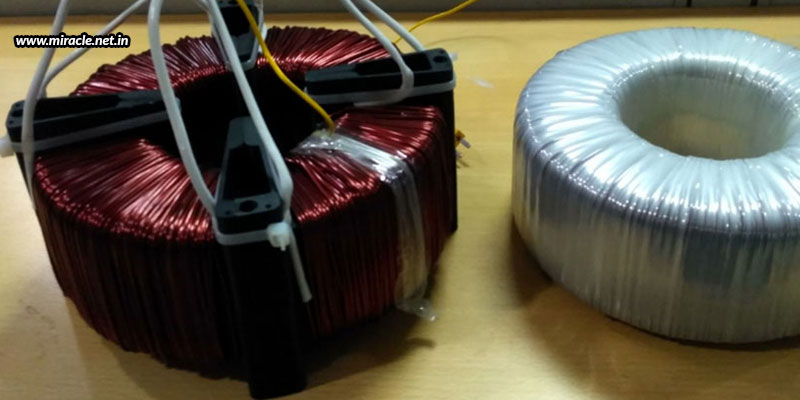Choosing Segmented Cap Transformers Over Conventional Ones - Miracle Electronics
When you’re operating a critical application, something involved with medical, aerospace, or military, you’re always trying to settle down on a few crucial decisions. One such decision may be determining the kind of transformers you want to use, upon which lots of electrical and signal-based outcomes will depend.

For instance, if you are into the medical industry, deciding upon the kind of medical isolation transformer in India you want to use for your applications, you may be unable to decide whether you should opt for a simple conventional one, or go in for a more radical one installed with segmented cap technology. If this is what you are unable to decide upon, you’re at the right place! We’ll help you know how a basic transformer is different from a segmented capped one, and how the latter can prove to be beneficial.
The basic construction of a toroidal transformer
A toroidal transformer has a basic method of construction which involves the following steps.
Creating a steel core – insulating the core – winding a magnetic wire around the core to create a primary winding – insulating the primary – winding a magnetic wire over the insulation to create a secondary winding – and finallyinsulating the secondary to complete the transformer.
Mounting the transformer
Once the transformer is manufactured, it is mounted either using a mounting washer and bolt, or by filling the center of the transformer with an epoxy, with a hole for a bolt.
The role of segmented core caps
Toroidal transformers are generally plain, but there are certain applications where additional segmented core caps are used. These core caps are mainly used to support the primary and secondary windings in alternate sectors to reduce leakage current. The insulating segments insulate the windings from the core over the full range of windings, allowing for double-wall insulation between adjacent windings, thus reducing leakage current to a great extent, as compared to conventional toroidal transformers. They also help to directly cool the core through ambient or forced air, without interfering with the insulation.
The construction of core caps
Several modular electrically insulating segments are snapped or joined together to form an annular or semi-annular core cap design to fully or partially cover the transformer core. The number of such segments that are required to complete a core cap is predetermined, based on the angle at which the adjacent walls are placed to each other. This is because the walls, which include male and female connector portions, are all disposed at a predetermined angle relative to each other, typically 30, 45, or 60 degrees. Typically, there are identical core cap segments in a single core, but there may also be groups of different segments spanning different arcs. The latter is basically seen in customized core cap designs that require certain particular properties and characteristics.
The benefits of a core cap design
Reduced costs – When a core cap design involves snapped segments, the cost to assemble the caps is reduced because the process of snapping requires lesser skill level than other techniques. Also, the cost to tool a smaller part for injection-moulding is lesser than the cost of tooling a larger part.
Reduced time – When a core cap design meets safety specifications for creepage and clearance, the manufacturing time is reduced because of no requirement for ground and inter-winding insulation and outer wrap. Moreover, the windings can be wound on one single machine, thus reducing the handling time.
Reduced temperature rise – When a core cap design allows airflow around the core and windings, while keeping creepage and clearance specifications safe, the temperature rise is reduced because there will be a direct path for the heat to escape from the un-insulated core into the environment, without having the windings and insulation to trap the heat within.
Reduced weight – When a core cap design includes mounting holes, the weight of the transformer is significantly reduced because there will be no center epoxy or mounting washer required.
As you can see, segmented cap transformers can offer significant reduction in leakage current, heat rise, costs, and time invested, in comparison to standard toroidal transformers. All of this combined, segmented cap transformers are lighter, faster, less expensive, and are rated for extended power for the same volume. This makes segmented cap transformers the ideal choice for critical applications like medical isolation transformers. So, whenever you are looking for an advantageous medical isolation transformer in India, you know what you have to choose. But, if you want a transformer that complies with applicable requirements, you need a manufacturer who you’re sure will provide you with only genuine standard transformers. One such reliable manufacturer is Miracle Electronics, where every transformer is RoHS and REACH compliant, and also adhered to the regulations under UL 60601-1 standards.